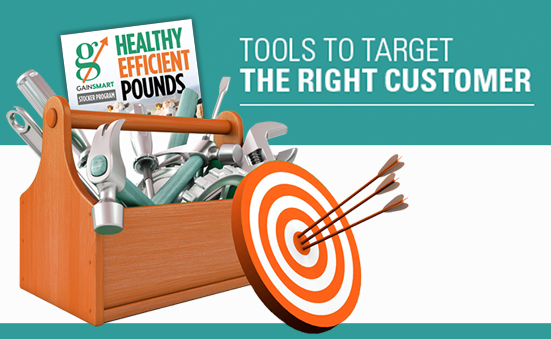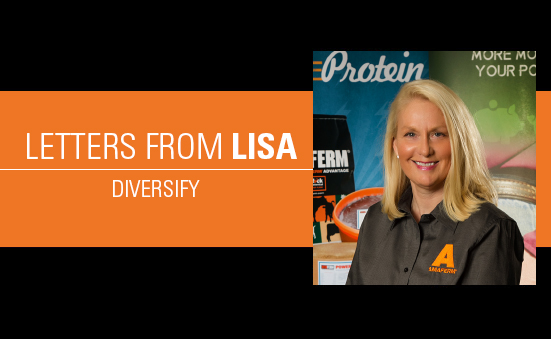In her letter this month, Lisa challenged every dealer to diversify to ensure their success. Sure, that might sound easy. And guess what? It is going to be easier than you think!
At BioZyme®, we offer a variety of supplement lines to cover a multitude of species from cattle, sheep and goats to swine, poultry and companion animals of horses, dogs and cats. Chances are that a majority of your customers own more than just one of those species. A recent statistic shows that 53% of American households own a dog. That’s more than half of your customers. Have you approached half of your customers about the Vitalize® canine line yet?
Perhaps the easiest way to open the conversation about a new product line to an already existing customer is to talk about something you are both familiar with – Amaferm®. For instance, if you have a cow-calf producer, who is feeding the VitaFerm® Concept•Aid® mineral, they probably understand one of the primary benefits is Amaferm, and how it works in their herd’s diet. But now you find out they also have four or five horses. Wouldn’t it be great to get them on Amaferm too?
“Multiple product lines open up more opportunity that can lead to additional sales. We have to get comfortable with having those conversations even if they aren’t in our wheelhouse. One thing that we are all comfortable with, or should be, is Amaferm and that is really what our products are about. That should be the very first thing that we are talking about when discussing our products. If we understand how Amaferm works, the rest of the conversation will take care of itself. In addition, the Vitalize products are designed to make the dealer more money than some of our other brands,” said Justin O’Flaherty, Area Sales Manager for the Carolinas, Tennessee and Virgina.
Chris Kyle, ASM for Arkansas and Louisiana, agrees that once people are hooked Amaferm in a product like VitaFerm, it should be easier to open the conversation on another line of product that BioZyme offers.
“Ask them if they liked the products on their other animals (cattle, sheep, goat) then they might be interested in what Amaferm could do for their horses also,” Kyle suggests.
O’Flaherty said another way to open up a conversation about the Vitalize line with someone who feeds another product line is to offer a sample, like the Vitalize Equine Recovery Gel. This quick-response, product could be a great conversation starter that leads to a long-term diverse customer who now orders Vitalize in addition to his or her VitaFerm each month, and it offers a great ROI.
Next, ask specific questions about your customer’s horse’s current nutritional needs and what feed they are feeding.
“This can usually open up a dialogue about what each specific horse’s needs are and/or if they feel they are buying hay constantly, the Vitalize® Digest More® Plus pellets can help them cut back a little on that,” O’Flaherty said.
Her last piece of advice was to keep the process simple and relevant.
“Dip your toe into the discipline that is most prevalent where your dealership is located. It doesn’t make sense to try to target dressage riders if you have an arena down the road that has nightly ropings. Just don’t overcomplicate it and don’t be afraid to ask for help,” she encourages.
Kyle agrees that keeping things simple is the best step for product diversification and sales success.
“Our products work, they will see it, and they will be glad that you, the dealer recommended the product. You just need to believe, and you will look like a pro for recommending them,” he said.
Start the conversation. Ask questions. Recommend a new line. Diversify, and watch your business grow.





